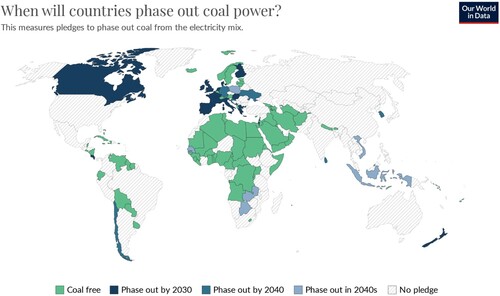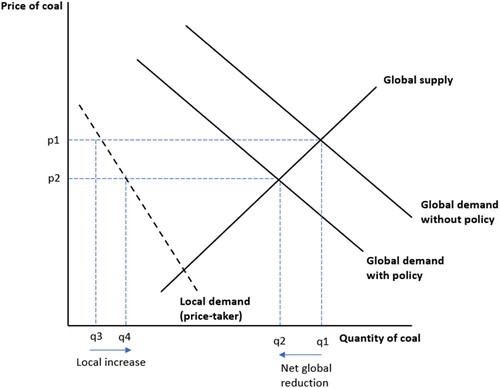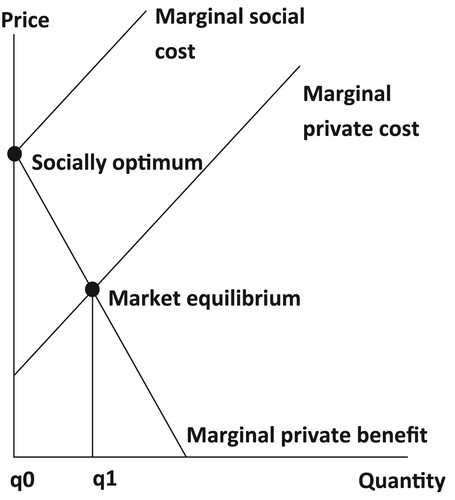Figures & data
Figure 1. Coal phaseouts. Data source: OurWorldInData.org/energy using Powering Past Coal Alliance; Ember Climate; Beyond Coal EU; Bloomberg Coal Countdown. Notes: Where a concrete phase out date is not defined, we have allocated the final year of the target decade. For example, ‘Phase out in the 2040s’ is given a target date of 2049.

Table 1. Coal phaseout strategies in select jurisdictions.
Figure 3. The risk of leakage. Source: made by the authors. Notes: demand-side policy can reduce global demand for coal (q1 → q2) but in price-taking jurisdictions with no policy, the resultant fall in global price (p1 → p2) can increase local consumption thereby resulting in ‘leakage’ (q3 → q4). The overall fall in global demand would be higher if these jurisdictions also adopted climate policy. Shifting global supply to the left can help counter leakage and achieve higher net global reduction.


